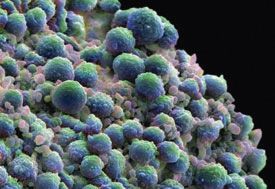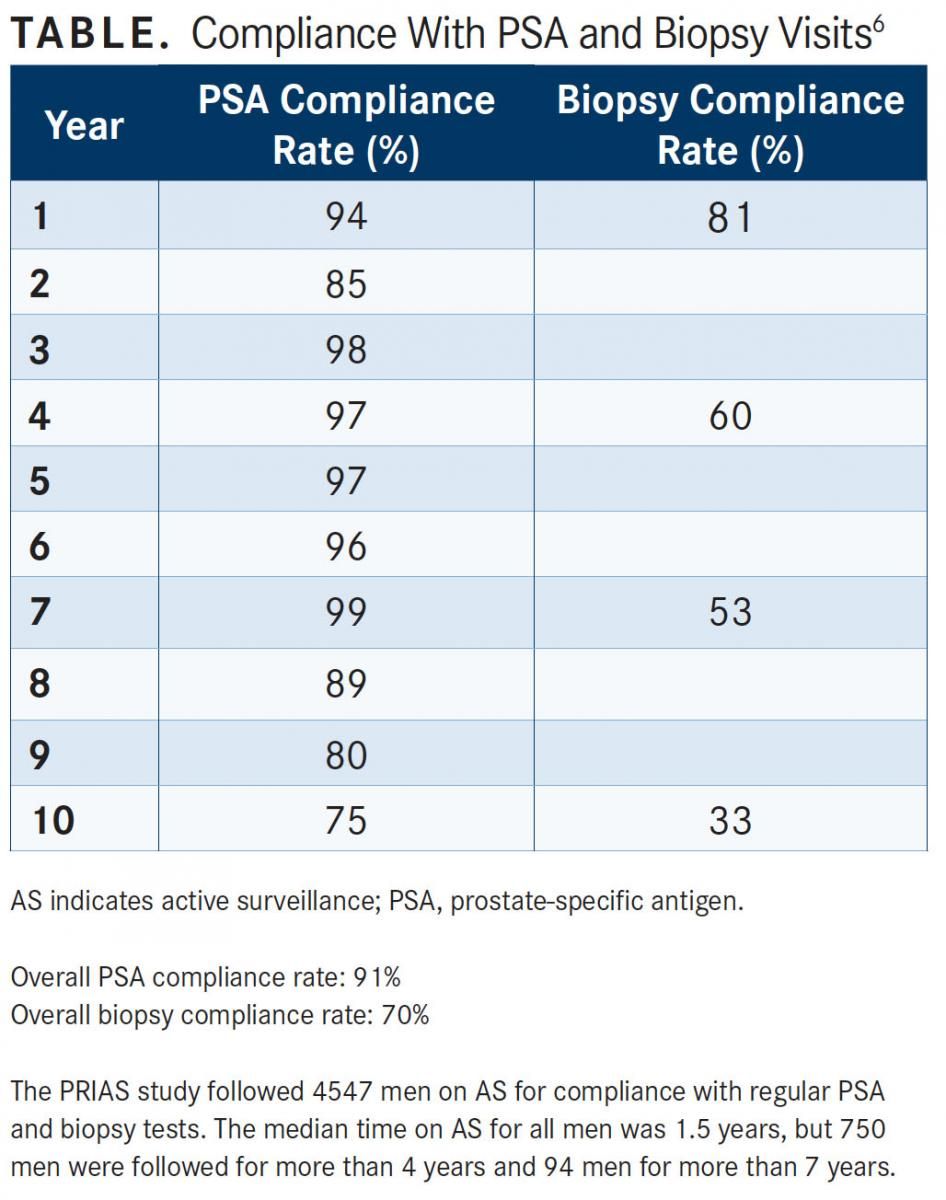Use of MRI Reduces Biopsy Burden for Prostate Cancer
Newer MRI techniques are being tested to improve the accuracy of prostate cancer diagnosis. Three presentations during the 2018 American Urological Association Annual Meeting discussed potential approaches to reduce the need for prostate biopsies for men with prostate cancer

Newer MRI techniques are being tested to improve the accuracy of prostate cancer diagnosis. Three presentations during the 2018 American Urological Association (AUA) Annual Meeting discussed potential approaches to reduce the need for prostate biopsies for men with prostate cancer.
Negative prostate MRIs combined with a negative biopsy history and low prostate-specific antigen (PSA) density (PSAD) enabled investigators to rule out the presence of clinically significant and high-grade prostate cancer with 95% accuracy, according to the results of one study presented during the meeting.1
The combination of negative MRI, negative biopsy history, and PSAD <0.15 ng/mL/cc was associated with a negative predictive value (NPV) of 95%. With a higher PSAD and a non-negative prostate biopsy history, the NPV declined by more than 20%. The results led investigators to propose an MRI-based algorithm for determining the need for prostate biopsy.
“If the MRI suggests a clinically suspicious lesion, we perform a biopsy; if the MRI is negative, we look at the patient’s biopsy history,” said Andre Luis de Castro Abreu, MD, assistant professor of clinical urology at the University of Southern California, Los Angeles, during an AUA press briefing. “If the patient never had prostate biopsy, it is probably better to perform a biopsy.
“If the patient had a prior negative biopsy, we then assess the markers, and if the levels are high or suspicious, the patient has a biopsy. If not, then the patient may avoid a prostate biopsy,” Abreu said.
Results from a second study reported at the briefing showed that combining multiparametric MRI (mpMRI) with the Prostate Health Index (PHI) biomarker tool predicted grade reclassification at biopsy for men on active surveillance and would have eliminated the need for repeat biopsy in about 20% of cases.2
A recent review showed that previous studies of MRI to detect clinically significant prostate cancer yielded NPVs of 63% to 96%, as determined by biopsy or prostatectomy specimen.3 Results of a large, multicenter study published last year suggested that triage by mpMRI could eliminate 25% of unnecessary prostate biopsies.4However, NPV ranged between 72% and 89%, depending on the definition of clinically significant prostate cancer.
Abreu reported findings from a retrospective analysis of 401 men scheduled to undergo mpMRI prior to prostate biopsy. The objective was to determine the accuracy of mpMRI, supplemented by biomarker data, for ruling out clinically significant and high-grade cancer on prostate biopsy, allowing patients to forgo repeat prostate biopsy.1The study population consisted of 102 patients with no prior biopsy, 212 with prior negative biopsy, and 79 with prior positive biopsy.
Investigators at 2 participating centers defined negative mpMRI as a Prostate Imaging Reporting and Data System (PI-RADS) score <3 or a Likert score <3. Clinically suspicious prostate cancer was defined as a Gleason score ≥3 + 4 and high-grade prostate cancer was defined as a Gleason score ≥4 + 3 on prostate biopsy.
Biopsy results revealed cancer in 34% of the patients, including clinically significant prostate cancer in 11% and high-grade cancer in 5%. MRI alone had an NPV of 95% for high-grade prostate cancer, 89% for clinically significant cancer, and 66% for any prostate cancer. The biomarker analysis showed that PSAD had significant discriminatory power for distinguishing clinically significant from insignificant cancer (P<.01) and from benign disease (P<.001). Pairing a negative mpMRI and PSAD cutoff of <0.15 ng/ mL/cc produced an NPV of 95% for the subgroup of patients with a prior negative biopsy (n = 128). Further lowering of the PSAD cutoff also improved NPV but with a trade-off of excluding substantially more patients.
The study is the largest to date to evaluate the combination of a negative MRI and PSAD for ruling out clinically significant and high-grade disease. The results are in line with those of the previous research, which yielded NPV values of 89% to 100%, Abreu said.
MRI AND SURVEILLANCE COMPLIANCE
Biopsy requirements associated with active surveillance are a major contributor to noncompliance (TABLE).5,6Identifying methods that would safely reduce biopsy burden without missing opportunities to treat cancers that develop high-risk features could improve compliance with active surveillance, said Zeyad R. Schwen, MD, a urology resident at Johns Hopkins University in Baltimore, Maryland.

Both mpMRI and PHI have demonstrated the ability to distinguish clinically significant from clinically insignificant prostate cancer. Whether combining the 2 modalities could improve prediction remained unclear.
Schwen reported findings from a retrospective study of 253 men enrolled in active surveillance who underwent mpMRI and PHI no more than 6 months apart, followed by prostate biopsy.2Investigators evaluated PHI, PHI density (PHID), and PSAD across a range of PI-RADS scores to determine the predictive accuracy for prostate cancer grade reclassification, defined as an increase in cancer grade from the patient’s original biopsy to a Gleason score >6.
Biopsy results showed that 38 patients had an increase in Gleason score and that grade reclassification did not occur in the remaining 215 patients. PHI, PHID, and PSAD all differed significantly between men who had grade reclassification and those who did not (P= .037 toP= .001). PSA level did not differ significantly between those with and without grade reclassification.
Additionally, PI-RADS scores differed significantly between men with and without grade reclassification, including the proportion of men with PI-RADS scores ≤3 or those with PI-RADS scores of 4 or 5 (P <.001). The proportion of men who meet National Comprehensive Cancer Network (NCCN) criteria for low or very-low risk was significantly different between the patients who had grade reclassification and those who did not (P = .001).
Comparing the ability of various parameters to rule out grade reclassification, Schwen and colleagues found that a PI-RADS score <3 was associated with an NPV of 91%, a PSAD <0.07 ng/mL/cc with an NPV of 88%, a PHID <0.39 with an NPV of 86%, and a PHI <25.6 with an NPV of 95%.
Investigators then paired a PI-RADS score ≤3 with the various parameters and recalculated NPV. The results showed an NPV of 95% for PSAD <0.07, 92% for PHID <0.39, and 98% for PHI <25.6. ROC analysis showed that the combination of a PI-RADS score ≤3 plus PHI <25.6 was associated with an area under the curve of 0.70, as compared with 0.68 to 0.69 for the other pairings.
“Using a PHI cutoff of less than 25.6 in combination with a PI-RADS less than or equal to 3, nearly one-fifth of surveillance biopsies could have been avoided at the cost of missing only 2.6% of clinically significant prostate cancers,” Schwen said. “Together, PHI and multiparametric MRI may be useful for decreasing the burden of surveillance prostate biopsies. This may result in fewer biopsy-associated complications, less cost to the healthcare system, and improved compliance with active surveillance.”
INCREASING USE OF PROSTATE MRI
The studies demonstrating the potential benefits of prostate MRI reflected the growing use of the imaging modality, as documented by a study reported as a poster presentation at the AUA meeting.6Investigators examined national trends in the use of MRI for patients undergoing prostate biopsy, using data from a large national payer (OptumLabs), Simon Kim, MD, a urologic oncologist at UH Cleveland Medical Center, and colleagues reported.
Although the NCCN cites MRI as a consideration prior to ultrasound-guided prostate biopsy, a paucity of data exists to document recent trends in the use of prostate MRI. Kim and colleagues examined adoption of MRI for patients undergoing prostate cancer screening.
The analysis included men aged 40 to 80 who underwent PSA screening for prostate cancer from January 2010 through December 2016. Investigators excluded patients who had a diagnosis of elevated PSA or prostate enlargement within 14 days after the screening test; a prostate biopsy within 60 days after diagnosis; a prostate MRI within the previous 6 months or 3 months after biopsy; or a history of prostate cancer, enlarged prostate, or elevated PSA.
The principal objectives were to document the use of prostate MRI among men screened for prostate cancer and to identify patient characteristics associated with the use of prostate MRI. Secondarily, investigators evaluated the frequency of diagnosis of localized prostate cancer within 3 months after biopsy.
The data showed that 42,428 men underwent prostate cancer screening, and 7799 (18.3%) had prostate MRI. Results from previous studies had shown a rate of 3.7%, the investigators noted. Over the 7 years studied, use of prostate MRI increased from 190.3 to 257.5 per 1000 biopsies in an unadjusted analysis and from 192.2 to 257.5 after adjustment.
Rates of MRI use increased in all age groups except men aged 40 to 49. Black and Asian patients were less likely to undergo prostate MRI, and Hispanic patients and men with Medicare Advantage coverage were more likely.
Patients who underwent prostate MRI were significantly more likely to have a diagnosis of localized prostate cancer than men who did not have MRI exams (OR, 1.77;P<.001). The observation supports use of MRI to optimize the detection of clinically significant prostate cancer, Kim and colleagues concluded.
References:
- Oishi M, Smyth TB, Shin T, et al. Negative MRI: which patients could safely avoid prostate biopsy? Results from multi-institutional study in 401 patients. Presented at: 2018 AUA Annual Meeting; May 18-21, 2018. San Francisco, CA. Abstract MP57-08.
- Schwen ZR, Carter HB, Tosoian JJ, et al. Prostate health index and multiparametric MRI to predict prostate cancer grade reclassification in active surveillance. Presented at: 2018 AUA Annual Meeting; May 18-21, 2018. San Francisco, CA.
- Fütterer JJ, Briganti A, De Visschere P, et al, Can clinically significant prostate cancer be detected with multiparametric magnetic resonance imaging? A systematic review of the literature.Eur Urol.2015;68(6):1045-1053. doi: 10.1016/j.eururo.2015.01.013.
- Ahmed HU, El-Shater Bosaily A, Brown LC, et al. Diagnostic accuracy of multi-parametric MRI and TRUS biopsy in prostate cancer (PROMIS): a paired validating confirmatory study.Lancet.2017;389(10071):815-822. doi: 10.1016/S0140-6736(16)32401-1.
- Moore CM, Parker C. The evolution of active surveillance for prostate cancer.Eur Urol.2015;68(5):822-823. doi: 10.1016/j.eururo.2015.07.020.
- Bokhorst LP, Alberts AR, Rannikko A, et al. Compliance rates with the Prostate Cancer Research International Active Surveillance (PRIAS) protocol and disease reclassification in noncompliers.Euro Urol. 2015;68(5):814-821. doi 10.1016/j.eururo.2015.06.012.
- Kim A, Karnes RJ, Houten HV, et al. Contemporary national trends in prostate MRI among patients undergoing a prostate biopsy: results from a privately insured patient population. Presented at: 2018 AUA Annual Meeting; May 18-21, 2018; San Francisco, CA. Abstract MP77-14.
